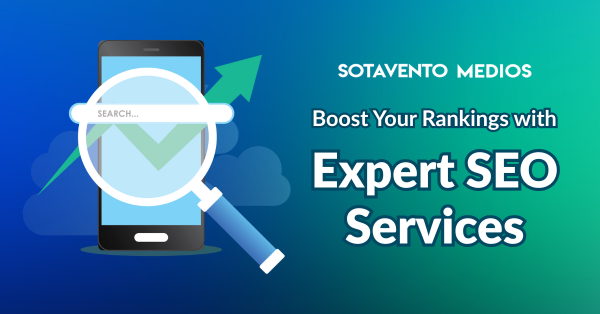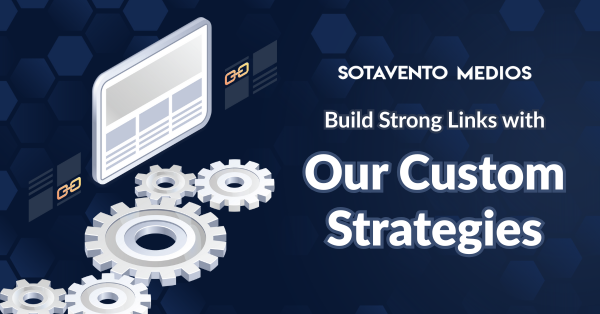The SEO landscape now goes beyond just keyword rankings and organic click-through rates. We have entered the era of Answer Engine Optimization (AEO). Large Language Models (LLMs) and Generative AI (GenAI) systems, like Google’s Gemini, are actively synthesizing information to provide direct, comprehensive answers. For B2B organizations, this shift represents a significant change in how we handle data.
At Sotavento Medios, we believe that the key to success in the AI-driven search economy is Structured Data 2.0. This is a refined, entity-first approach to Schema Markup, specifically designed for machine consumption. It aims to transform your website from a collection of documents into a clear, machine-readable Content Knowledge Graph. The goal is simple: make sure your content is the trustworthy source referenced by AI engines. This secures your brand’s authority and visibility in the new semantic layer of the web.
The Entity-First Imperative: Moving Beyond Rich Results
For years, Structured Data was a practical tool for gaining rich snippets, such as review stars, FAQ toggles, and product carousels. While these still help drive high click-through rates, the real lasting value of Schema now lies in its ability to clarify entities and relationships for sophisticated AI models.
Why AI Needs Better Schema Implementation
Generative AI requires data that is clear, contextualized, and free of confusion.
- Eliminating Ambiguity: A central issue for AI is understanding natural language. If your content talks about “Managed Services,” an AI needs to know whether that refers to IT infrastructure, marketing operations, or financial consulting. Comprehensive schema uses properties like additionalType or linked entities to remove any uncertainty.
- Building Your Knowledge Graph: AI systems focus on content from recognized entities with solid credentials. By linking your Organization schema to key People (like founders and thought leaders) and Article schema, you clearly connect expertise to your content. This makes it a reliable source for AI-generated answers.
- Facilitating Zero-Click Answers: When an LLM provides a direct answer, it depends on semantically clear data. Structured Data 2.0 ensures that the essential facts—pricing, specifications, service features, and proprietary methods—are ready for extraction. This boosts your chances of being the authoritative source cited in an AI overview.
Core Technical Elements of Structured Data 2.0
The modern use of Schema requires a strategic, organized approach that goes beyond just copying and pasting code snippets.
1. Advanced Nested Relationships
The main technical shift involves creating complex, nested entity graphs. Instead of treating each page as a separate entity, your schema should map the logical relationships within your business.
| Schema Type | Critical Nesting Example | Business Value for AI |
| Product | Nesting Service within a LocalBusiness or Organization to define offerings by geography or department. | AI can accurately recommend your specific service for a hyper-local, high-intent query. |
| Article | Nesting Person schema for the author, linked via mainEntityOfPage back to the Organization. | Establishes E-E-A-T, making the content a higher-confidence source for AI-generated summaries. |
| FAQPage | Nesting HowTo steps within the answer to a complex question. | Enables AI to pull multi-step, structured procedures directly into a conversational answer flow. |
Best Practice: Use the @id property in JSON-LD, Google’s preferred format, to create unique identifiers for your key entities. This allows you to refer to and relate these entities across multiple pages without redundancy, efficiently building a consistent Content Knowledge Graph.
2. Time-Based and Real-Time Schema
For AI, data is only as valuable as its freshness. In the past, datePublished was enough. Today, real-time data integration is becoming essential for important business information.
- dateModified: Ensure every content update triggers a schema modification timestamp. This signals to AI systems that the information is up to date, reducing the chance of your data being seen as old.
- Real-Time Data Feeds: For B2B services, product availability, or event scheduling, connect your internal inventory or CRM systems to automatically update properties like offers, price, or eventStatus. AI-powered assistants and transactional agents rely on this accuracy to make booking or purchasing decisions with confidence.
3. Unstructured Data Annotation
The real power of structured data is in defining unstructured text. Look at your most valuable content: proprietary research, technical reports, and white papers.
- Proprietary Schema: While following Schema.org is important, for unique, high-value assets, consider using domain-specific extensions or custom PageMaps to ensure your unique data points are highlighted.
- Q&A Optimization: Use FAQPage and QAPage schema on content that addresses common customer concerns. Frame content around natural language questions that match actual user queries. Then, ensure the answer is complete and credible. This is essential for visibility with Conversational AI.
Strategic Implementation and Validation for B2B
A technically perfect implementation won’t matter without a clear plan and ongoing validation.
The Auditing Plan for AI-Readiness
- Entity Audit: Identify the top 10 entities you want AI to associate with your brand, such as “Sotavento Medios” and “Technical SEO Auditing.” Make sure these entities have consistent Organization, LocalBusiness, or Service schema across the site.
- Coverage Focus: Prioritize schema application on pages that drive crucial conversions, like Product/Service landing pages, Pricing pages, and high-value industry reports. These are the assets AI systems will query for direct decision-making facts.
- Cross-Validation: Don’t just rely on Google’s Rich Results Test. Use the official Schema.org Markup Validator to ensure technical compliance and check for proper nesting of properties. Regularly ask leading Generative AI tools questions that your content should answer to see if your brand is being cited or summarized.
The Strategic Goal: Future-Proofing Your Data
In a world where AI determines information authority, Structured Data 2.0 is not just an SEO tactic. It is an essential data governance strategy. It ensures that your intellectual property is correctly indexed, your credibility is machine-verified, and your business value is accurately extracted by the platforms that influence high-stakes B2B decisions.
Don’t wait for your competitors to shape the future. Take charge of your Content Knowledge Graph today.

















